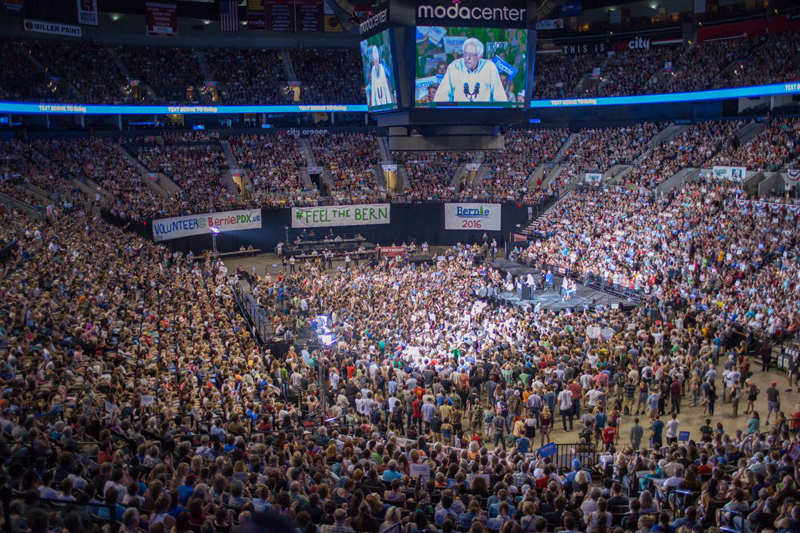— Submitted by Jeff Roby
September 11, 2015
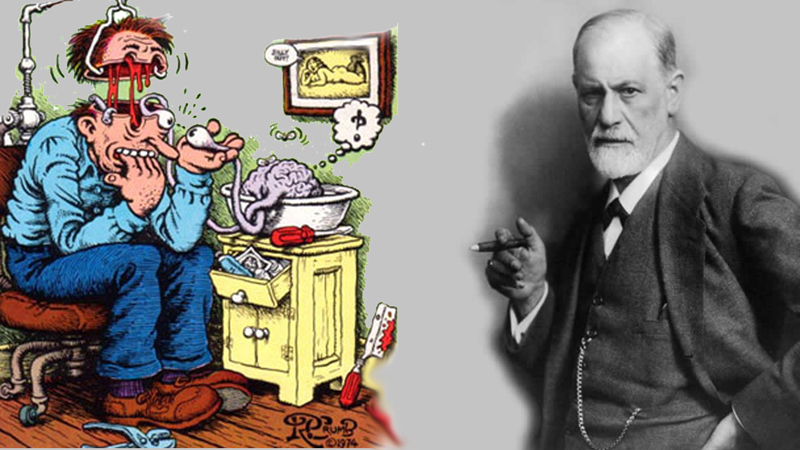 “A state of consciousness is characteristically very transitory; an idea that is conscious now is no longer so a moment later, although it can become so again under certain conditions that are easily brought about.”
“A state of consciousness is characteristically very transitory; an idea that is conscious now is no longer so a moment later, although it can become so again under certain conditions that are easily brought about.”
— Sigmund Freud. The Ego and the Id. 1923
“I can clearly see your nuts!”
— psychiatrist to patient wrapped in cellophane
At the risk of blasphemy …
 … consciousness alone don’t do shit! Only people can “do” anything. Consciousness may influence and even determine what actions people take. But the bottom line is that if people don’t act, don’t do, then all the advanced consciousness in the world is as “transitory” as Freud describes.
… consciousness alone don’t do shit! Only people can “do” anything. Consciousness may influence and even determine what actions people take. But the bottom line is that if people don’t act, don’t do, then all the advanced consciousness in the world is as “transitory” as Freud describes.
This can be applied as well to social movements. As Woody Guthrie put it, they “come with the dust and are gone with the wind,” they are as ephemeral as the snows of yesteryear.
This is not just a quarrel over semantics. The problem is that movement is wrenched out of the relationship between organization and mass movement, a relationship which is ill understood by the U.S. Left, and deliberately obscured by media and academia (if they can see at all) which want to bury that relationship.
The problem is far from academic. The deadly consequence for the U.S. Left is that it fetishizes “raising consciousness” while treating building actual organizing efforts as a throwaway line. Thus the dearth of serious mass organizing by the Left, which at best seeks to raise the consciousness of the masses without doing the hard work of organizing the masses.
The Sanders Movement.
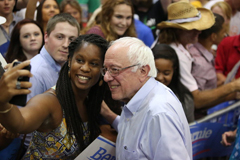 I am a supporter of Bernie Sanders and his run for the presidency. I work on his campaign here in Florida. So I hope it doesn’t seem too perverse on my part to take issue with one of the best articles I have seen in support of Sanders from a left perspective. In “The Sanders Paradox: a Brief for Bernie” in the September 8 Counterpunch, William Kaufman writes about the Left’s pathological and alienated hysteria over the Sanders campaign. He argues:
I am a supporter of Bernie Sanders and his run for the presidency. I work on his campaign here in Florida. So I hope it doesn’t seem too perverse on my part to take issue with one of the best articles I have seen in support of Sanders from a left perspective. In “The Sanders Paradox: a Brief for Bernie” in the September 8 Counterpunch, William Kaufman writes about the Left’s pathological and alienated hysteria over the Sanders campaign. He argues:
“Scarcely a day passes without an ominous recitation of Sanders’s manifold political shortcomings—Sanders exposés seem to have become a thriving cottage industry for the far-left commentariat …
“Is there something different about the Sanders campaign that warrants support from radicals who have rightly spurned previous forays into the Democratic Party? This key question immediately begs another, even more fundamental one: How to awaken tens of millions of people from the entrapments of mass hypnosis, prostration, and indifference and into the first halting steps toward recognition and self-emancipation?”
Kaufman’s takedown of the impotence of the Left is thorough and scathing. Well-deserved. Then he goes on to argue:
“This is the unique and irreplaceable value of the Sanders candidacy: it is strewing seeds of mass consciousness around issues of class and inequality and the environment in a way that no other person or party could accomplish right now. Radicals need to ask themselves: How is that a bad thing?”
No, it’s not a bad thing. But how do Sanders and his supporters not end up with all the other “snows of yesteryear”? Eugene McCarthy, George McGovern, Ted Kennedy, Jesse Jackson, Dennis Kucinich — a whole bone yard is dedicated to past left Democrats.
At the risk of being mean …
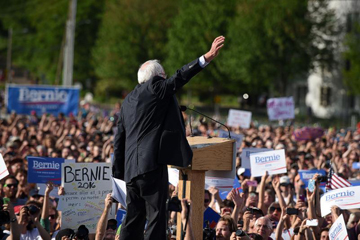 Here is my quarrel with Kaufman. He essentially stops with “strewing seeds of mass consciousness.” He says nothing about how the Sanders Movement is to be crystallized in concrete organization, win, lose or draw, in his run for the White House. For just as with individuals “doing,” it is concrete organization that bridges the gap between the consciousness of the masses and action taken by the masses. All the consciousness we need, according to the polls, is already out there.
Here is my quarrel with Kaufman. He essentially stops with “strewing seeds of mass consciousness.” He says nothing about how the Sanders Movement is to be crystallized in concrete organization, win, lose or draw, in his run for the White House. For just as with individuals “doing,” it is concrete organization that bridges the gap between the consciousness of the masses and action taken by the masses. All the consciousness we need, according to the polls, is already out there.
Sanders himself, calling for “political revolution,” understands this. “Organizing a mass movement,” is ambiguous around these matters. He states, “A campaign has got to be much more than just getting votes and getting elected. It has got to be helping to educate people, organize people. If we can do that, we can change the dynamic of politics for years and years to come.”
Kaufman mushes things. In dissing working towards an independent left party, he writes:
“Yes, we urgently need an independent activist left party, one that can have a real impact. We also need socialism now, drastic carbon reductions and crash investment in renewable energy ten years ago, and so on.”
Kaufman thus goes into the general left litany of “all the good issues.” But by going general, he loses all focus. However correct his words may be in the abstract, they are read by his audience — the U.S. Left — as “keep doing the same old shit. But work harder!” Let’s be frank. The condition of the U.S. Left is pathetically ripping itself apart while Wall Street and the Military Industrial Complex and the Beltway barely have to break a sweat. Except they sweat over Sanders and, for the record, Donald Trump, but Trump is a whole other issue.
Kaufman even adds:
“… urging the virtues of an independent left party and movement as an alternative is like urging the virtues of fusion energy over solar panels—a great-sounding idea, but one that has no purchase on reality for the foreseeable future.”
Yes, they are nuts!
 Calling for more of same is like the factory boss appearing on the shop floor and exhorting his workers to work harder. At best, the workers roll their eyes, huff and puff for five minutes, and wait for the boss to strut back into his office thinking something has been accomplished.
Calling for more of same is like the factory boss appearing on the shop floor and exhorting his workers to work harder. At best, the workers roll their eyes, huff and puff for five minutes, and wait for the boss to strut back into his office thinking something has been accomplished.
But Sanders is making them sweat. His focus is in the electoral arena, and his call to action is for a “political revolution.” Thus:
“Essentially, what a political revolution means is that we organize and educate and create grassroots movements, WHICH WE CERTAINLY DO NOT HAVE RIGHT NOW.” [emphasis added]
He is working for some form of independent electoral action, operating, for better or worse, at the edge of what can be done WITHIN the constraints of the Democratic Party.
The anti-Sanders Left has no such excuse.
The Left’s constraints are self-imposed. In terms of sheer numbers, in terms of activists taking to the streets, the Sanders campaign is at this moment where the action is. We need to do some concrete analysis to get a picture of the terrain.
So here’s some broad perspective. Take the statement on “Leftist Third Party and Independent Candidates” by a leading Green Party organizer from Minnesota:
[Of the] “folks working at the Bernie booth at the DFL stand at the state Fair. Of the 7 people working the [Sanders] booth — 3 said THERE that they will vote for the Green candidate if Bernie loses.”
His number is roughly similar to my own experience with the Sanders campaign in Florida.
Below are some numbers and projections comparing the Sanders campaign with the Green Party. One can quarrel over it mixing apples and oranges, comparing numbers from different years, and variables such as the number of long-term potential supporters and either’s capacity to reach them and organize them. But I believe they balance out and it gives an adequate picture of the scale of the two groups.
Let’s look at those numbers:
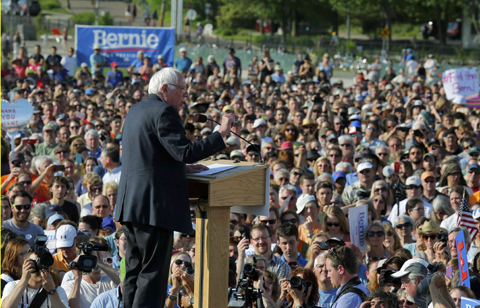 In 2008, Obama got 17,535,458 total votes in the general election. That included 576,214 in Florida.
In 2008, Obama got 17,535,458 total votes in the general election. That included 576,214 in Florida.
In 2012, Jill Stein on the Green Party line received 469,501 for president (0.36%) and 8,708 votes in the Florida general election.
Let’s go with the Minnesota organizer’s numbers and assume that 3/7 of Obama’s 2008 Florida total would = roughly 268,000, that being the potential number of Florida voters for Stein in the 2016 general election.
There are some 6,000 registered Greens in Florida.
The upshot of these numbers is that (1) based on 2008 presidential numbers, there is a pool of over 260,000 votes for Stein in Florida alone. (2) that 260,000 utterly dwarfs the 6,000 registered Greens in the state, who are overwhelmingly completely inactive.
Now factor in “critical mass.” In other words, a group of 5 cannot do 25% of what a group of 20 can do. Organizing capacity increases exponentially with growth, at least up to a point.
But this is Green apple pie in the sky. The problem is that the Green Party of Florida (GPFL) is pathetically weak, and has minimal capacity to reach much of anybody or anything.
Now let’s look at registrations. Obviously, the percentage of registrants who would become active is smaller than the total voters. So the GPFL’s 6,000 registered Greens yields maybe 20 to 30 activists, or roughly 0.5%. On the other hand, 0.5% of 260,000 = 1,300. And they would be fresh folks, unlike the Green registration lists, which are pretty much exhausted. (I’ve worked them.)
So the potential exists for a massive influx of Sanders supporters who are very close to Green values. If they could be reached. In fact, the Old Guard’s status would be seriously threatened by even a small percentage of those Sanders supporters coming in, younger, more experienced, more unified, and harder workers.
Thus, there is a self interest on the part of the Old Guard to not wage much of a campaign at all, as they have repeatedly shown that maintaining their Good Old Boy and Good Old Girl social club is far more important than the growth of the party.
Thus, I would say to Michael and all those with hopes for the Green Party, fight like hell for Jill Stein, reach out to the Sanders supporters (stop calling them “Bots,” stop the incessant drumbeat to purge or cripple Sanders supporters within the party), and build anew.
My experience is mainly with Florida, but I’ve been closely watching the Green Party developments at the national level (and just how many showed up at the last Green Party national convention, 100?), and I see variations of the Florida experience all across the country.
There’s gold in them thar swamps!
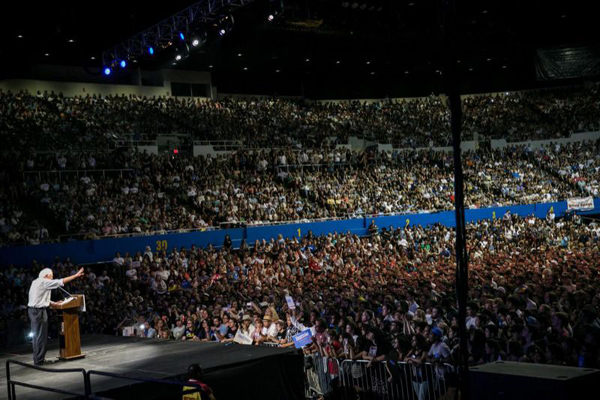 As mentioned above (and as the Left endlessly points out), Sanders as a Democrat operates under serious constraints. The Left, ironically, is up in arms over “what will Bernie do?” A top-down mentality if ever there was one. But the question is what will the millions of Sanders supporters do? That’s hard to say. What I would even have them do is not clear. There are a lot of variables in play, and a lot of people are saying it’s too early to decide. But it’s high time we started thinking about it. And the relationship between the Sanders supporters and the Green Party has to be given some serious thought.
As mentioned above (and as the Left endlessly points out), Sanders as a Democrat operates under serious constraints. The Left, ironically, is up in arms over “what will Bernie do?” A top-down mentality if ever there was one. But the question is what will the millions of Sanders supporters do? That’s hard to say. What I would even have them do is not clear. There are a lot of variables in play, and a lot of people are saying it’s too early to decide. But it’s high time we started thinking about it. And the relationship between the Sanders supporters and the Green Party has to be given some serious thought.
Where Kaufman falls short, therefore, is that in focusing on mass consciousness, he does not go into the organizational questions at all. So while he dismisses the Green Party because of “Jill Stein’s statistical-hopelessness,” the fact is that an organized force, operating within the mass movement, is more important than its sheer numbers would indicate. Thus the Green Party has to be part of our calculations.
Let’s make a New Deal.
What is to be done? I see four major options for the Sanders forces:
(1) have them all go to the Green Party. (But can that happen?)
(2) keep them inside the Dems, but forming a radical caucus, perhaps with Progressives of America.
(3) break away and form a new party.
(4) create a different kind of organization that straddles Dems, Republicans and independents.
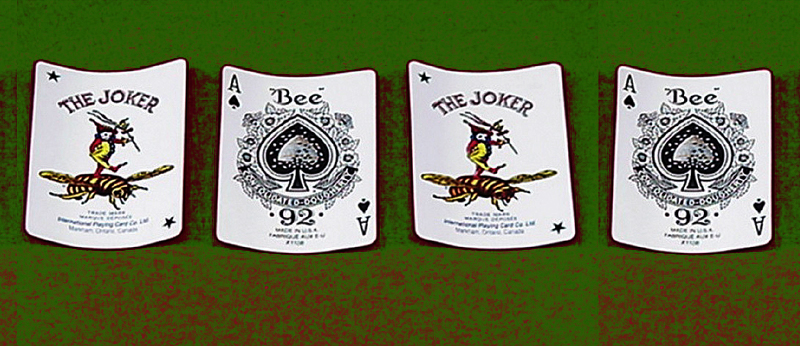 On door number (1) …
On door number (1) …
a serious question is whether the GP can be reformed into a coherent and effective organization at all? Personally, while I am working on the Sanders campaign, I am not trying to get Greens to abandon ship. Rather, I have been urging Greens to work to make the Green Party a party worth Sanders people supporting after the smoke clears away. In its current state, the Green Party is a tough sell.
And would disappointed Sanders people be able to operate in any organized way to become a force within the Green Party, using their potentially overwhelming numbers to take advantage of its name recognition and ballot status? The Green Party’s Old Guard — as the above numbers demonstrate — has a material interest in keeping out a Sanders influx if their primary interest is in preserving the party as a small-time social club, something Kaufman understands very well. The Old Guard might prefer to “burn it down” rather than let it change.
Door number (2) …
is no piece of cake either. Could progressive Dems, such as those in Progressive Democrats of America, find a way to maintain their commitment and level of organization to operate effectively as a force within the Democratic Party on a much larger scale. That is a difficult path. Any Hillary presidential campaign would move quickly to shut them down.
But the Sanders campaign is not taking control of local efforts and hiring staff. This was at first scary. No national money? No hired staff? But in Florida, for instance, they are learning that being “stuck” with building their own operation gives them an independence that a reliance on hired staff would not allow. After a candidate is defeated or drops out (two possibilities for Sanders), hired staff leaves, looking for their next gig, leaving nothing in their wake.
How about door number (3)?
Would Sanders supporters find it easier to create a spanking new progressive party, rather than wrestle with the Old Guard of either the Greens and the Democrats? That would entail its own difficulties, and though Sanders himself had kicked that idea around himself before making the Democratic Party plunge, it’s not clear that enough Sanders people would be willing to make the break in a sufficiently organized way. And finally …
Door number (4)
is an enticing possibility. Not a left/right coalition which Beltway pundits throw out regularly, desperately seeking some mythical Center (“can’t we all get along?”), but an explicitly progressive (left) organization that simply does not EXCLUDE on the basis of party affiliation. In Florida, for instance, the majority of races for State Legislature, both House and Senate, are not contested by one or the other regular party. With everyone dragged inside one tent or the other in those districts, what happens is that issues explode WITHIN the monopoly tent. This terrain is relatively unexplored.
Joe Hill had it right: “Organize!”
I don’t have the answer(s). In fact, I don’t believe that we have the material conditions to arrive at the answers. But I think I’ve got some of the right questions. They will have to be answered. Please notice that my questions are largely tactical.
A broad and radical Social Democratic orientation is assumed, some rough equivalent of “bread, land and peace,” and we should not be eager to fight over the fine points. (No, it should be “land, peace and bread.” Sellout! Can’t you see it should obviously be “peace, bread and land.”) The work today is to organize, organize, organize, Democrat, Green, No Party Affiliation (NPA), and find some vehicle(s) to bring them together.
How this plays out in the long run is hard to tell. But whichever option you like, or other options not considered, we have to be laying the groundwork now.

